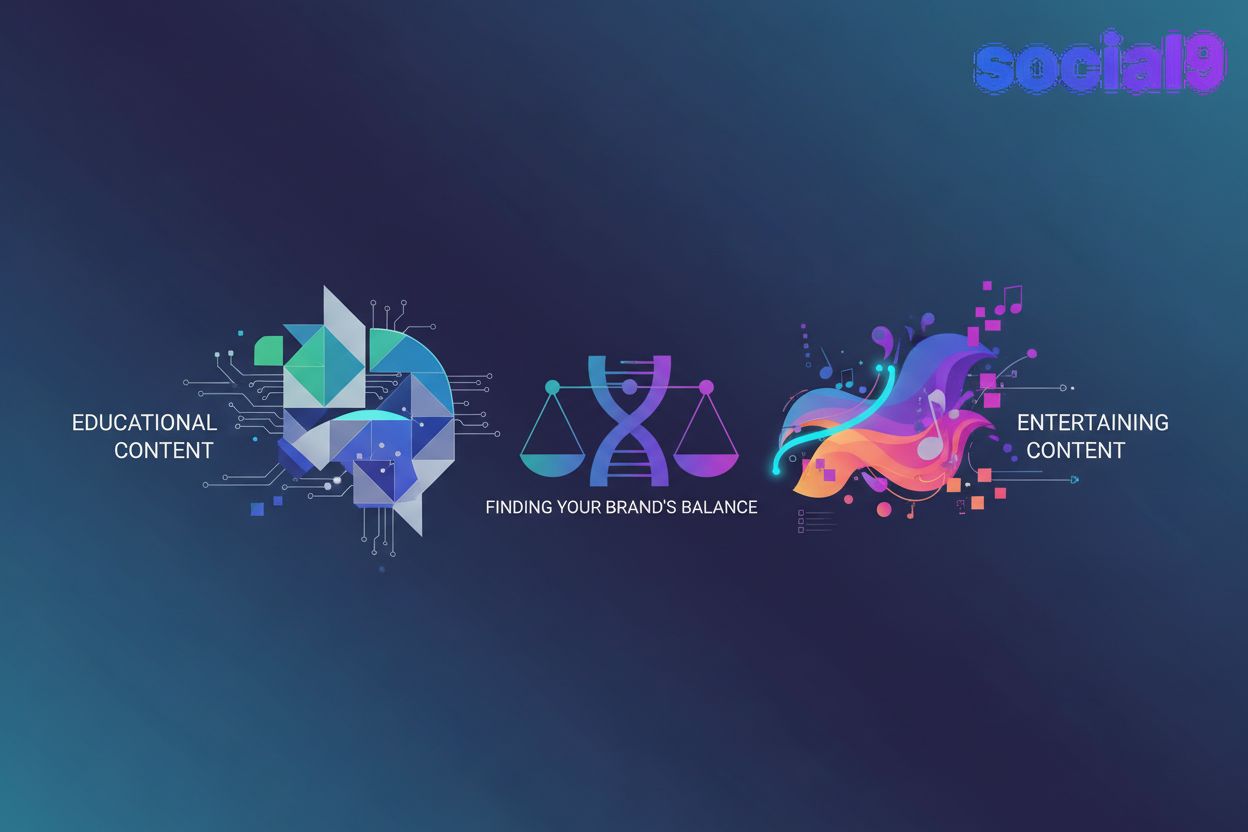Unlocking Social Media Success: How AI-Driven Sentiment Analysis Supercharges Your Content Strategy
TL;DR
Understanding AI-Driven Sentiment Analysis
AI-driven sentiment analysis is revolutionizing how businesses understand their audience. (Transforming Business Interactions with AI Sentiment Analysis) But have you ever wondered how a computer can interpret human emotion?
Sentiment analysis, also known as opinion mining, is the process of identifying and categorizing emotions in text. It determines whether the sentiment expressed is positive, negative, or neutral. Think of it as a way to automatically understand how people feel about a particular topic.
- Core Concept: It involves analyzing text to determine the author's attitude, emotions, or opinions.
- Identification: Sentiment analysis identifies subjective information and categorizes it.
- Categorization: It classifies the sentiment as positive, negative, or neutral.
AI and machine learning have automated sentiment analysis, making it faster, more accurate, and scalable. (How AI is Reshaping Sentiment Analysis? - - Datategy) Lumoa reports that nearly one-third of IT professionals say AI saves them time.
- Automation: AI automates the process of sentiment analysis through machine learning. This happens by training algorithms on vast amounts of text data, allowing them to recognize patterns and classify sentiment. Natural Language Processing (NLP) is crucial for this, breaking down sentences into words (tokenization), understanding word roles (part-of-speech tagging), and using these insights to gauge meaning.
- Comparison: AI-driven sentiment analysis offers speed, accuracy, and scalability compared to traditional methods.
- NLP Importance: Natural Language Processing (NLP) is crucial for ai to understand and interpret human language.
There are different types of sentiment analysis, each offering unique insights.
- Basic: Classifies sentiment as positive, negative, or neutral. Example: "I love this new phone!" (Positive)
- Fine-Grained: Provides more detailed sentiment levels, such as very positive, somewhat positive, neutral, somewhat negative, and very negative. Example: "The battery life is okay, but the camera is fantastic!" (Somewhat positive for battery, very positive for camera)
- Emotion Detection: Identifies specific emotions like joy, anger, sadness, fear, surprise, and disgust. Example: "I'm so frustrated with this slow internet connection!" (Frustration)
- Aspect-Based: Analyzes sentiment toward specific features or aspects of a product or service. Example: Analyzing customer reviews for a mobile app to determine sentiments related to design, performance, and price. "The app's interface is intuitive (positive design), but it crashes frequently (negative performance)."
Understanding AI-driven sentiment analysis is the first step. Now, let's delve into its practical applications.
Applications of Sentiment Analysis in Social Media
Social media is a goldmine of opinions. But how do you sift through the noise to find the insights that truly matter?
AI-driven sentiment analysis offers several powerful applications for understanding your audience and improving your content strategy. Let's explore some key ways you can use this technology.
One of the primary uses of sentiment analysis is to track how your brand is perceived across social media platforms. By analyzing mentions, comments, and shares, you can quickly identify positive and negative trends.
- Tracking Brand Mentions: Sentiment analysis tools monitor social platforms for mentions of your brand, products, or services. Insights gained might include identifying recurring complaints about shipping delays or consistent praise for a specific customer service representative. This could lead to actions like optimizing logistics or recognizing top-performing staff.
- Identifying Trends: You can identify recurring themes and sentiments associated with your brand. For example, are customers consistently praising your customer service but criticizing your product's ease of use? This could prompt a review of product tutorials or a focus on user-friendly design in future iterations.
This information helps you understand what aspects of your brand resonate with your audience and where improvements are needed.
Beyond general brand monitoring, sentiment analysis excels at extracting insights from direct customer feedback. This includes reviews, comments, and direct messages.
- Extracting Insights: AI algorithms can sift through large volumes of customer feedback to identify common pain points and areas for improvement. For instance, a software company might discover through sentiment analysis that users find a particular feature confusing, leading them to create a dedicated explainer video or update the user interface.
- Prioritizing Customer Service: Sentiment analysis helps prioritize customer service efforts by flagging urgent issues or particularly dissatisfied customers. A customer service team could use this to immediately address a highly negative review before it escalates, potentially turning a negative experience into a positive one.
By understanding the emotions behind customer feedback, you can tailor your responses and improve overall satisfaction.
Sentiment analysis isn't just about reacting to current opinions; it can also help you anticipate future trends. By monitoring social media and news articles, you can spot emerging trends and shifts in consumer sentiment.
- Spotting Emerging Trends: AI can analyze vast amounts of text data to identify new topics, keywords, and sentiment changes within specific industries. For example, a fashion brand might notice a growing positive sentiment around "sustainable materials," prompting them to launch an eco-friendly product line.
- Informing Strategies: These insights can inform product development and marketing strategies. For example, if you notice a growing interest in sustainable products, you can adjust your offerings accordingly.
By staying ahead of the curve, you can position your brand as a leader in your industry.
As AI evolves, sentiment analysis will become even more sophisticated. Moving on, we'll examine the tools and platforms that make all of this possible.
Leveraging Sentiment Analysis for Content Creation
Is your content connecting with your audience, or is it falling flat? Sentiment analysis can help you create content that truly resonates by understanding the emotions behind audience feedback.
The key to successful content lies in understanding your audience's emotions. You must tailor your content to meet their needs and preferences.
- Understanding Emotions: Sentiment analysis helps you identify the emotions your audience expresses in their feedback, comments, and social media posts. This allows you to create content that addresses their specific concerns and interests. If sentiment analysis reveals widespread frustration with a product's setup process, you could create a series of step-by-step video tutorials or a detailed troubleshooting guide.
- Identifying Resonating Topics: By analyzing sentiment around different topics, you can pinpoint what truly resonates with your audience. For example, if you notice a surge of positive sentiment around a particular product feature, you can create more content highlighting that feature. A fitness brand might find that posts about overcoming workout plateaus generate significant positive engagement, inspiring them to create more motivational content around that theme.
- Evoking Specific Emotions: Think about the emotions you want to evoke with your content. Do you want to inspire, entertain, or educate? Use sentiment analysis to test how your content is received and adjust your approach accordingly. If a campaign aims to evoke excitement, but sentiment analysis shows it's perceived as confusing, you'd revise the messaging to be clearer and more energetic.
Social9 is an AI-powered platform designed to help content creators generate engaging social media content. It exemplifies how sentiment analysis can be integrated into content creation workflows.
Social9 helps you create content that resonates with your audience.
- AI-Powered Generation: Social9's AI algorithms generate engaging social media content tailored to your brand's voice and tone. This saves you time and effort while ensuring high-quality content. The AI can analyze past successful content and audience sentiment to suggest topics and phrasing that are likely to perform well.
- Smart Captions and Hashtags: Social9 provides smart caption suggestions and hashtag recommendations to increase the visibility of your content. This helps you reach a wider audience and boost engagement. If sentiment analysis indicates your audience responds well to humorous captions, Social9 might suggest witty phrasing.
- Content Templates: Social9 offers a variety of content templates for different social media platforms. These templates ensure a consistent and effective social media presence.
- 24/7 Support: Social9 provides 24/7 support to assist you with any content creation needs. This ensures you always have access to expert assistance.
The social media landscape is constantly changing, so you need to adapt your content strategy in real-time. Sentiment analysis can help you monitor the sentiment around your content and adjust your approach accordingly.
- Monitoring Sentiment: Keep a close eye on the sentiment around your content. Are people responding positively or negatively? If a new product announcement receives a wave of negative comments, you'd want to address those concerns quickly.
- Responding to Negative Feedback: Address any concerns or negative feedback promptly and professionally. This shows your audience that you value their opinions and are committed to providing a positive experience.
- Capitalizing on Positive Sentiment: Amplify successful content and capitalize on positive sentiment. Share positive feedback and testimonials to build trust and credibility with your audience.
By actively monitoring sentiment and adapting your content in real-time, you can ensure your content continues to resonate with your audience.
Imagine a healthcare provider using sentiment analysis to assess patient feedback on their telehealth services. By identifying negative sentiment related to long wait times, they can optimize scheduling and communication to improve patient satisfaction.
Here are a couple more diverse examples:
- E-commerce: An online clothing retailer notices through sentiment analysis that customers frequently express excitement about new arrivals but disappointment with the shipping speed. They can then create content that highlights the "newness" and perhaps offer a limited-time free express shipping promotion to address the negative sentiment.
- SaaS Company: A software-as-a-service provider identifies through sentiment analysis that users are confused about a specific feature. They can then create a series of short, engaging video tutorials demonstrating that feature, directly addressing the identified pain point.
By using sentiment analysis to create emotionally resonant content, optimize engagement, and adapt in real-time, you can supercharge your content strategy and achieve social media success.
Next, we will cover the tools and platforms that make all of this possible.
Tools for AI-Driven Sentiment Analysis
Ready to tap into the emotional pulse of your audience? AI-driven sentiment analysis tools can help you understand how your content resonates.
Several AI-powered platforms can analyze sentiment. These tools process text and categorize the emotions expressed as positive, negative, or neutral. Each platform offers unique features and pricing to fit different needs.
- IBM Watson Natural Language Understanding: This tool uses advanced NLP techniques to extract sentiment, recognize entities, and identify keywords. IBM Watson Natural Language Understanding offers robust capabilities for accurate sentiment classification.
- Google Cloud Natural Language API: Leveraging Google's machine learning models, this API provides sentiment scores and labels. Google Cloud Natural Language API also features content classification and syntax analysis.
- Microsoft Azure Text Analytics: As part of its suite, Microsoft Azure Text Analytics uses AI models to detect sentiment and extract key phrases. It supports multiple languages and provides insights into sentiment trends.
Integrating these tools into your workflow can streamline data collection and analysis. APIs and integrations allow for seamless data flow, enabling you to automate sentiment analysis.
- APIs for Data Collection: APIs allow you to connect sentiment analysis tools to various data sources, such as social media platforms, customer surveys, and review sites. This integration provides a continuous stream of data for analysis.
- Automated Workflows: Set up automated workflows to analyze data in real-time. This ensures you stay updated on the latest sentiment trends without manual intervention.
- Customization: Customize parameters to focus on specific aspects relevant to your content strategy. This helps you tailor the analysis to meet your specific needs.
For those who prefer a hands-on approach, open-source libraries offer a way to perform sentiment analysis. These tools provide flexibility and control over the analysis process.
- NLTK (Natural Language Toolkit): NLTK is a popular Python library for NLP tasks. It includes tools for sentiment analysis, text processing, and more.
- TextBlob: TextBlob is another Python library that simplifies sentiment analysis. It provides a straightforward api for analyzing text and determining its sentiment polarity.
To show you how this works, here's a basic example.
from textblob import TextBlob
text = "This is an amazing article! I really enjoyed reading it."
analysis = TextBlob(text)
print(analysis.sentiment)
This code will output the sentiment polarity and subjectivity of the text. The sentiment.polarity will be a float between -1.0 (very negative) and 1.0 (very positive), with 0.0 being neutral. The sentiment.subjectivity will be a float between 0.0 (very objective) and 1.0 (very subjective). So, for the example text, you'd expect a polarity close to 1.0 and a subjectivity close to 1.0, indicating a strongly positive and subjective statement.
These open-source options enable content creators to delve deeper into sentiment analysis.
Choosing the Right Tool
Selecting the best sentiment analysis tool depends on your specific needs:
| Tool/Library | Pricing | Ease of Use | Key Features | Target Audience |
|---|---|---|---|---|
| IBM Watson NLU | Paid (tiered) | Moderate | Advanced NLP, entity recognition, keyword extraction | Enterprise, Developers |
| Google Cloud NL API | Paid (tiered) | Moderate | ML models, content classification, syntax analysis | Enterprise, Developers |
| Azure Text Analytics | Paid (tiered) | Moderate | Sentiment, key phrase extraction, multi-language | Enterprise, Developers |
| NLTK | Free (Open Source) | Advanced | Comprehensive NLP toolkit, customizable | Researchers, Developers |
| TextBlob | Free (Open Source) | Beginner | Simple API for sentiment, translation | Beginners, Developers |
Understanding what tools are available and how to integrate them sets the stage for optimizing your content strategy. Next, we'll explore how to measure the impact of your sentiment analysis efforts.
Best Practices for Ethical Sentiment Analysis
Is your AI-driven sentiment analysis strategy ethical? It's a question every content creator should consider to maintain audience trust and avoid potential backlash.
One of the most critical aspects of ethical sentiment analysis is addressing bias and fairness. AI models learn from data, so if the training data contains biases, the model will likely perpetuate them.
- Identifying and Mitigating Bias: Regularly audit your sentiment analysis models to identify potential biases. For example, if the model consistently misinterprets the sentiment of a particular demographic group, investigate the training data and adjust accordingly. This could involve actively seeking out and including more data from underrepresented groups.
- Ensuring Fair Outcomes: Strive for fair and equitable outcomes for all users. Avoid using sentiment analysis in ways that could discriminate against certain groups. For instance, don't use sentiment analysis to target specific demographics with negative advertising.
- Creating Unbiased Training Data: Curate diverse and representative training datasets. Include a wide range of voices and perspectives to minimize bias. This means ensuring your dataset includes text from various age groups, geographic locations, cultural backgrounds, and linguistic styles.
Data privacy is another crucial ethical consideration. You must handle user data responsibly and comply with relevant regulations.
- Complying with Regulations: Understand and adhere to data privacy regulations such as GDPR and CCPA. Ensure you have proper consent mechanisms in place before collecting and analyzing user data. For example, a website might display a clear banner asking users for consent to collect and analyze their feedback for sentiment analysis purposes.
- Anonymizing Data: Protect user identities by anonymizing and aggregating data whenever possible. Avoid storing personally identifiable information (PII) unless absolutely necessary. When reporting on sentiment, present aggregated findings rather than individual user comments tied to specific names.
- Transparency in Data Practices: Be transparent with your audience about how you collect and use their data. Clearly explain your data collection and usage practices in your privacy policy.
Finally, ensure your sentiment analysis processes are transparent and explainable. Users should understand how your models work and how their data is being used.
- Explaining Models: Provide clear explanations of how your sentiment analysis models work. Avoid using black-box models that are difficult to interpret. You could have a dedicated page on your website explaining that you use AI to analyze feedback to improve services, without going into overly technical jargon.
- Providing Access to Scores: Give users access to their sentiment scores and interpretations. Allow them to understand how their feedback is being perceived.
- Addressing Concerns: Be prepared to address concerns about the accuracy and reliability of your sentiment analysis. Acknowledge the limitations of the technology and be open to feedback.
By following these best practices, you can ensure your sentiment analysis efforts are ethical, responsible, and beneficial for both your brand and your audience. Next, we'll explore how to measure the impact of your sentiment analysis efforts.
Measuring the ROI of Sentiment Analysis
Is sentiment analysis truly worth the investment? Understanding the return on investment (ROI) can help you justify the use of AI-driven sentiment analysis in your social media content strategy.
To measure the impact of sentiment analysis, define your Key Performance Indicators (KPIs). These metrics show whether your sentiment analysis efforts are paying off.
- Engagement Rate: Calculate the number of likes, shares, and comments your content receives. Track whether sentiment-driven content leads to higher engagement than traditional content. For example, a financial services company can measure if posts addressing customer concerns identified through sentiment analysis receive more engagement. Calculation: (Total Engagements / Total Reach) * 100. You'd compare this rate for content informed by sentiment analysis versus content not.
- Brand Sentiment Score: Use sentiment analysis tools to track the overall sentiment towards your brand. Monitor changes in sentiment scores over time to see if your strategies improve customer perception. For instance, a retail brand can track if sentiment scores improve after addressing negative feedback about product quality. Derivation: This is often an average of sentiment scores across all mentions. If you have 100 mentions, and 60 are positive (score +1), 30 neutral (score 0), and 10 negative (score -1), your average score would be ((601) + (300) + (10-1)) / 100 = 0.5.*
- Customer Satisfaction: Measure customer satisfaction through surveys and feedback forms. See if sentiment analysis insights lead to higher satisfaction scores. For example, a healthcare provider can assess whether patient satisfaction improves after implementing changes based on sentiment analysis of patient feedback. Calculation: Typically measured via Net Promoter Score (NPS) or Customer Satisfaction Score (CSAT) surveys. You'd correlate improvements in these scores with actions taken based on sentiment analysis.
Set realistic goals and benchmarks for improvement. Without these, it's hard to know if you're moving in the right direction.
It's important to connect content success directly to sentiment analysis insights. This helps demonstrate the value of your efforts.
- Tracking Performance: Monitor the performance of content created using sentiment analysis. Note metrics like reach, impressions, and conversions.
- Comparing Results: Compare sentiment-driven content versus traditional content. See if the former outperforms the latter in terms of engagement and positive sentiment. For example, an e-commerce company can compare the performance of product descriptions optimized using sentiment analysis with those created without such insights.
- A/B Testing: Use A/B testing to optimize content based on sentiment analysis. Test different versions of your content to see which resonates best with your audience. For instance, a restaurant chain can test different ad copies based on sentiment analysis of customer reviews. Sentiment analysis might reveal that customers are particularly sensitive to mentions of "fresh ingredients." This insight can form the hypothesis for an A/B test: one ad copy emphasizes "fresh ingredients," while the other uses a more general description. You'd then measure which version drives more clicks or conversions.
Communicating the value of sentiment analysis to management and clients is essential. This helps secure continued investment in these tools and strategies.
- Data-Driven Reports: Present reports on the ROI of sentiment analysis. Include metrics like increased engagement, improved brand sentiment, and higher customer satisfaction.
- Communicating Benefits: Explain how sentiment analysis insights lead to better decision-making. Show how it helps improve content strategy, product development, and customer service.
- Securing Buy-In: Use these reports to justify continued investment in sentiment analysis tools. Show how these tools contribute to overall business goals and ROI.
By demonstrating the concrete benefits of sentiment analysis, you can ensure ongoing support for your efforts.
Understanding the ROI of sentiment analysis is crucial for justifying its use and securing continued investment. Next, we will discuss future trends in AI-driven sentiment analysis for social media.
The Future of Sentiment Analysis in Social Media
The future of sentiment analysis is rapidly evolving, promising deeper insights and more nuanced understanding. Are you ready to peek into what lies ahead?
Expect advancements in ai and machine learning to refine sentiment analysis accuracy.
Emotion AI, which detects nuanced emotional states, may also gain prominence. For example, a customer service chatbot could use emotion AI to detect if a user is becoming increasingly frustrated and then escalate the conversation to a human agent, or adjust its tone to be more empathetic.
The integration of sentiment analysis with CRM and sales data will also give a fuller picture of customer behavior.
Multimodal sentiment analysis analyzes text, images, and videos for sentiment. This could mean analyzing a customer's social media post that includes a photo of a damaged product. The text might express mild disappointment, but the image of the broken item could reveal a much stronger negative sentiment, prompting a more urgent response.
Combining these data types gives a more comprehensive understanding of emotions.
For example, this could identify frustration in a customer's voice and facial expressions during a video call.
Stay informed about the latest trends and technologies to remain competitive.
Invest in training and education for your team to maximize the value of sentiment analysis.
Adopt a proactive and ethical approach to sentiment analysis to maintain audience trust.
AI-driven sentiment analysis empowers you to create content that truly connects.





